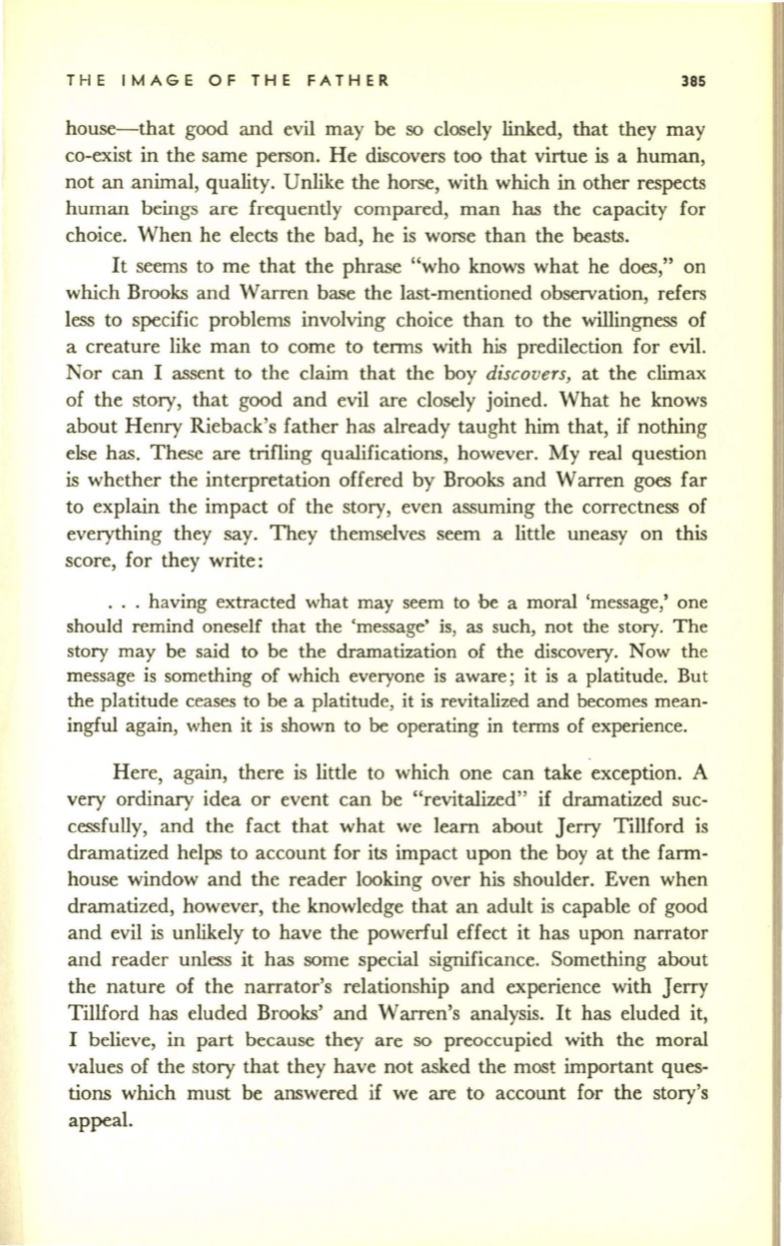
THE IMAGE OF THE FATHER
385
house-that good and evil may be so closely linked, that they may
co-exist in the same person. He discovers too that virtue is a human,
not an animal, quality. Unlike the horse, with which in other respects
human beings are frequently compared, man has the capacity for
choice. When he elects the bad, he is worse than the beasts.
It seems to me that the phrase "who knows what he does," on
which Brooks and Warren base the last-mentioned observation, refers
less to specific problems involving choice than to the willingness of
a creature like man to come to terms with his predilection for evil.
Nor can I assent to the claim that the boy
discovers,
at the climax
of the story, that good and evil are closely joined. What he knows
about Henry Rieback's father has already taught him that, if nothing
else has. These are trifling qualifications, however. My real question
is whether the interpretation offered by Brooks and Warren goes far
to explain the impact of the story, even assuming the correctness of
everything they say. They themselves seem
.a
little uneasy on this
score, for they write:
.. . having extracted what may seem to be a moral 'message,' one
should remind oneself that the 'message' is, as such, not the story. The
story may be said to be the dramatization of the discovery. Now the
message is something of which everyone is aware; it is a platitude. But
the platitude ceases to be a platitude, it is revitalized and becomes mean–
ingful again, when it is shown to
be
operating in terms of experience.
Here, again, there is little to which one can take exception. A
very ordinary idea or event can be "revitalized" if dramatized suc–
cessfully, and the fact that what we learn about Jerry Tillford is
dramatized helps to account for its impact upon the boy at the farm–
house window and the reader looking over his shoulder. Even when
dramatized, however, the knowledge that an adult is capable of good
and evil is unlikely to have the powerful effect it has upon narrator
and reader unless it has some special significance. Something about
the nature of the narrator's relationship and experience with Jerry
Tillford has eluded Brooks' and Warren's analysis. It has eluded it,
I believe, in part because they are so preoccupied with the moral
values of the story that they have not asked the most important ques–
tions which must be answered if we are to account for the story's
appeal.


